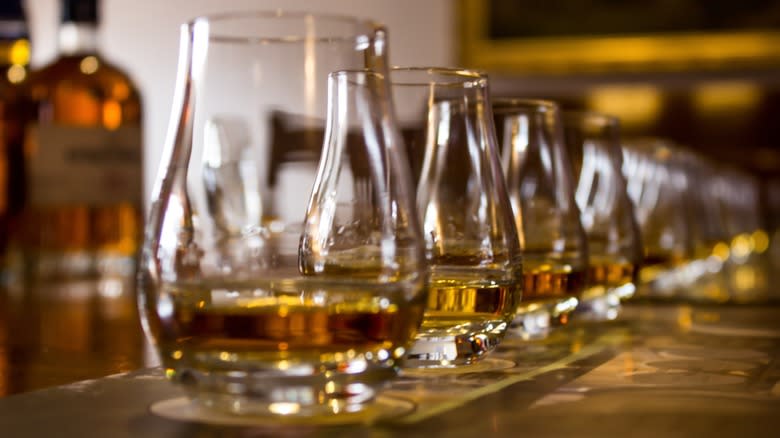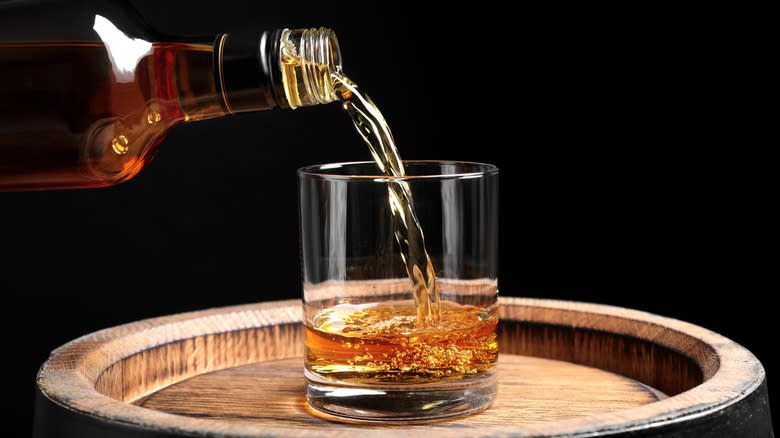Whiskey Novices Shouldn't Be Intimidated By A Vertical Tasting, According To Michter's Master Distiller - Exclusive

We've all heard of a whiskey tasting before. It's where you put several whiskeys side by side and you taste each to compare them. With that basic premise, you can get creative with how you set the tasting up. A vertical whiskey tasting is done by picking different whiskeys from the same distillery from different years. When we were at the Nassau Paradise Island Wine and Food Fest for a Michter's tasting hosted by The Dilly Club, we had a chance to talk to Michter's Master Distiller, Dan McKee, about vertical whiskey tastings and why they're a great idea even for novices.
"I love how we do that where it gives you a perspective of difference in age and then also how different oats influence the whiskey," McKee said. He thought setting up a vertical tasting would depend "on what kind of experience you're looking for," but noted that it would work especially well with "a single barrel product from year to year." Single barrel whiskeys are a great choice for vertical tastings because the variation in different years will be much more interesting and obvious.
Normally, whiskey is made by blending different barrels together until the distillery achieves the flavor profile they're looking for. What that means in practice is that year by year a specific whiskey isn't going to taste all that different since the distillers are aiming for consistency. That's normally a good thing, but when you're doing a whiskey tasting, it can make for a relatively boring comparison. Single barrel whiskeys tell you the year and often the batch number, which also gives you more of a foothold to work with.
Read more: The 27 Best Bourbon Brands, Ranked
Vertical Whiskey Tastings Are All About Subtle Nuances

With whiskey, it's all about the small details. "Year to year your distillate should be consistent before it goes into the barrel," Dan McKee explained. "But I always say we're working with Mother Nature, so you're always going to get little different nuances." It's those little differences that make a vertical tasting interesting even if you aren't focusing on single barrels. That's why setting up a vertical whiskey tasting doesn't necessarily mean you have to buy four different vintages of the same exact single barrel whiskey, though you could.
The important thing is that you're trying different products from the same distillery. Many times, a whiskey won't tell you what year it's from because it's often a blend of many barrels from different years. And the age statement on a whiskey only refers to the youngest part of the blend. Even still, you can piece together a fuzzy picture through a little due diligence if you're inclined to do so.
If knowing the exact year of every whiskey is less important than seeing all the different ways a distillery expresses itself or seeing how the different bottles in an experimental product line -- like the Buffalo Trace Prohibition Collection -- taste in comparison, that can work, too. "We're aging to a taste profile, not an age statement," McKee went on. "So each year we want it to be in the family, but we're okay with it being a little different from 2019, 2020, '21, and so on. We're okay with that, but we don't want it where a whiskey lover would take it and go, 'Wow, they made a left-hand turn. This doesn't even resemble it.'"
Read the original article on Tasting Table

